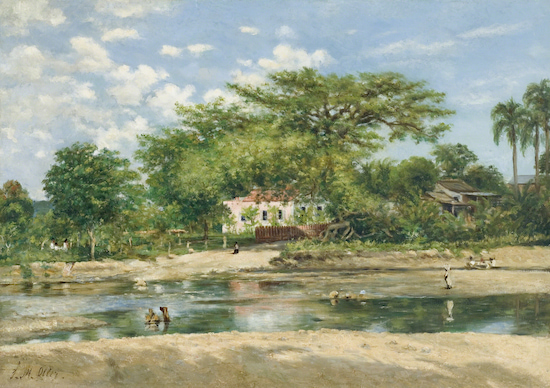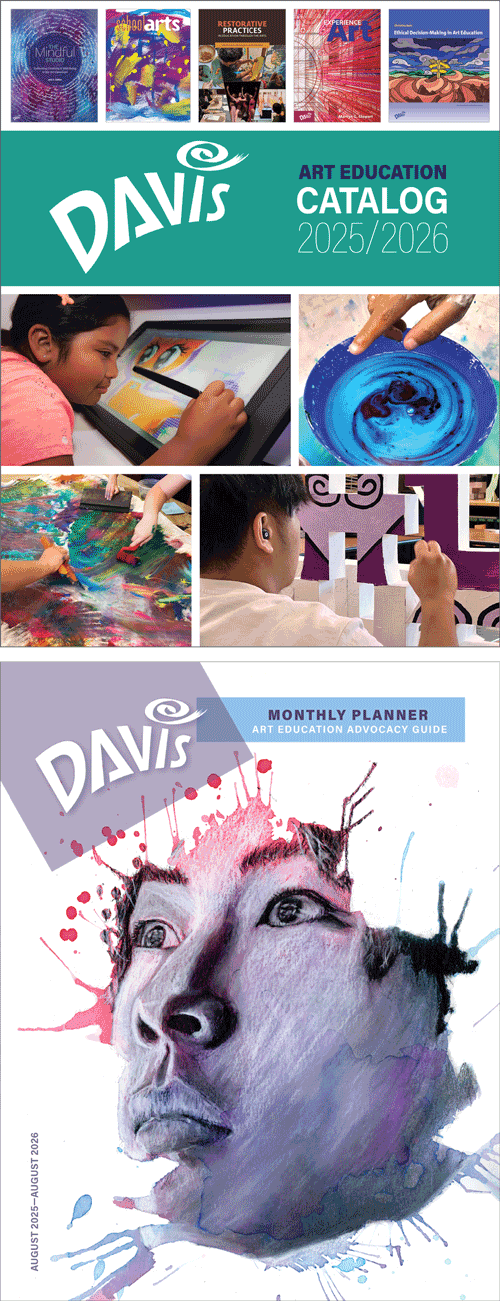Artist Birthday: Francisco Oller y Cestero
Like many of the countries colonized by the Spanish during the 1400s and 1500s, Puerto Rico has had a rich artistic culture. Spanish culture overran the native Taino culture, and established an artistic tradition dependent on European art styles. In the late 1800s, Puerto Rico began to absorb influence from European artistic centers, and this is true of the painter Francisco Oller y Cestero.
Artist birthday for 17 June: Francisco Oller y Cestero (1833–1917, Puerto Rico)
Francisco Oller y Cestero is the only Latin American artist who went to France and helped develop Impressionism.
 |
| Francisco Oller y Cestero, The Ponce Silk-Cotton Tree, ca. 1887–1888. Oil on canvas, 48.9 x 69.2 cm. © 2025 Museo de Arte de Ponce, Puerto Rico. (PON-6) |
Another visit to Paris in 1873 cemented Oller's interest in Impressionism. When he returned to his native Puerto Rico in 1884, he continued painting landscapes in the open air with the high-key Impressionist palette. This site gave Oller the opportunity to render reflections of light on water, a signature theme of Impressionism. He most likely painted this work while seated beneath overhanging foliage. Shadows cast from the leaves appear in the painting’s foreground, uniting the painter and viewer with the natural environment.
Archeologists have found traces of human settlement on Puerto Rico since at least 2000 BCE. Between the 600s and 1000s CE an Arawak Indian culture developed, the Taino. The Taino were the dominant culture by 1000. Columbus encountered the Taino when he landed on the island in 1493. By 1508 the island had been colonized by the Spanish. The Spanish forced the Taino into slave labor for them, and their culture was soon decimated by diseases introduced by the Europeans. The Spanish began importing African slaves in the 1700s to replace the dwindling Taino culture.
Puerto Rican art has its roots in the Baroque and Rococo Spanish styles. During the 1800s, Puerto Rican artists struggled with the aesthetic tradition of Spanish art and the desire increasingly to cast off that mantle and establish an indigenous Puerto Rican painting school.
Oller was the first native Latin American artist to study in Europe, and the only Latin American to contribute to the development of Impressionism. He studied in the 1850s in Spain, then in the 1860s in France, where he studied under the Barbizon Realists Thomas Couture (1815–1879) and Gustave Courbet (1819–1877). He also associated with future Impressionists Claude Monet (1840–1926), Camille Pissarro (1830–1903), Auguste Renoir (1841–1919) and Alfred Sisley (1839–1899), who helped him ultimately formulate an Impressionist style which he took back to Puerto Rico in 1865. His earliest landscapes of Puerto Rico were in the Barbizon Realist style
.
Correlations to Davis Programs: Davis Collections: Supplemental Image for AP Art History, Content Area 4: Later Europe and Americas

Comments